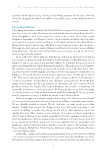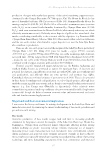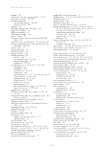18 – River and wetland health in the Lake Eyre Basin – an economic perspective 161 Lake Eyre Basin rivers, though neither of these valuation exercises has previously been done. Contrastingly, it is only possible to identify a change in non-use value. Thus economists calculate the total use but their estimate of non-use value focuses on how value changes with a new resource use option. Economists cannot calculate the total use and non-use value of a wetland or river. Measuring the economic value of the environment How does an economist estimate the economic values of the wetlands and rivers of the Lake Eyre Basin? There are three broad sets of approaches. First, market-based techniques can be used to estimate economic values for direct and indirect uses of the environment. This includes the productivity approach, which estimates change in economic value. For example, it would be possible to measure the loss of economic value of flooding for grazing in the Channel Country of the Lake Eyre Basin, if irrigation diverted water from the Thomson River upstream. Further, in the group of market-based techniques, replacement or damage costs can be used to estimate values where there is a loss of an ecosystem service and there is a need to develop an alternative to replace the service. For example, destruction or degradation of a wetland may remove its ecosystem service of purifying water or tourist value, requiring a replacement water source. This may require establishing a new water treatment plant or treating water to a higher level of quality where the cost of replacement indicates the value of the resource. This approach could be used in the context of rehabilitating the pollution effects of the Lady Annie Mine (see Chapter 19). Another example is the reductions in flows to the lower River Murray, which required governments to spend more than $2.4 billion, including a desalination plant for Adelaide that was highly reliant on the River Murray for its water supply (Kingsford et al. 2011). The second set of approaches is the revealed preference techniques. These use information from related markets to estimate values. One commonly used technique is the travel cost approach for estimating recreational use values. For example, we can tell something about the recreation value people have for a destination such as a wetland by how much they would spend in getting to their location in terms of travel cost and time. People are clearly prepared to spend a lot of money visiting Lake Eyre (see Chapter 13). We know that as the cost goes up, people tend to visit less often and consequently it would be expected that there may be proportionally less visitation for people further away. This relationship allows estimation of a demand curve for identifying recreation value. A second revealed preference technique is hedonic pricing, which involves using property prices to identify environmental values. An expectation is that house prices change with environmental quality this technique separates the change in economic value due to changes in environmental quality from the characteristics of the house or community. This informs about the amenity value of the local environment. For example, if there were a decline in the vegetation of the Channel Country along the Diamantina River, this might affect property values. Finally, there are stated preference techniques, with contingent valuation and choice modelling, the two most widely used. Contingent valuation involves estimating non-market values through directly questioning respondents about their willingness to pay for specific
Downloaded from CSIRO with access from at 216.73.216.131 on Nov 21, 2025, 7:46 AM. (c) CSIRO Publishing

















































































































































































































































































